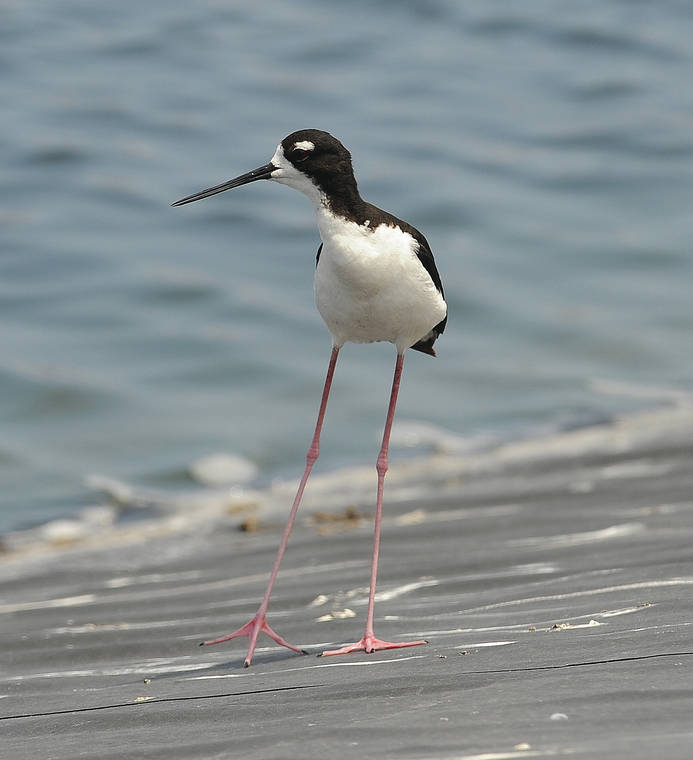The U.S. Fish and Wildlife Service has reopened the public comment period on a proposed rule to reclassify the aeʻo (Hawiian stilt) from endangered to threatened under the Endangered Species Act.
The reopening of comment period gives all interested parties an additional 30 days to comment on the proposed rule with the closing date now set for July 23. There will be a virtual public meeting for the public to ask questions about the rule and provide comments at 5 p.m. July 7.
The proposal to downlist the aeʻo is based on the best available scientific information, a thorough analysis of threats and how they have been alleviated, and the ongoing commitment and proven track record of partners to continue managing for healthy aeʻo populations. The service’s final determination will take into consideration all comments and any additional information received during the comment period.
The Endangered Species Act (ESA) defines endangered as a species that is currently in danger of extinction throughout all or a significant portion of its range and threatened as likely to become endangered in the foreseeable future. The proposed downlisting of the aeʻo is an example of the power of conservation partnerships between federal, state and private stakeholders under the ESA.
Over the past three decades, conservation actions throughout Hawaii have resulted in more wetland areas being managed compatible with the species’ needs.
Aeʻo continue to be threatened by nonnative animal predation (e.g., mongooses, cats, and rats), habitat loss and modification due to human activities, type C botulism, and effects due to climate change. Survey data and a recent population viability analysis indicate that the aeʻo population has been stable to increasing for several decades in the eight islands where it exists. Stable population trends are expected to continue into the foreseeable future, as long as the service and state continue current management practices, such as: predator control, vegetation management, and water level control.
Comments already submitted need not be resubmitted for the final rule. Instructions on how to submit comments are provided at https://www.regulations.gov, Docket Number: FWS-R1-ES-2020-0079. The proposed rule, comments and materials we receive, as well as supporting documentation, are available for public inspection on the docket.

